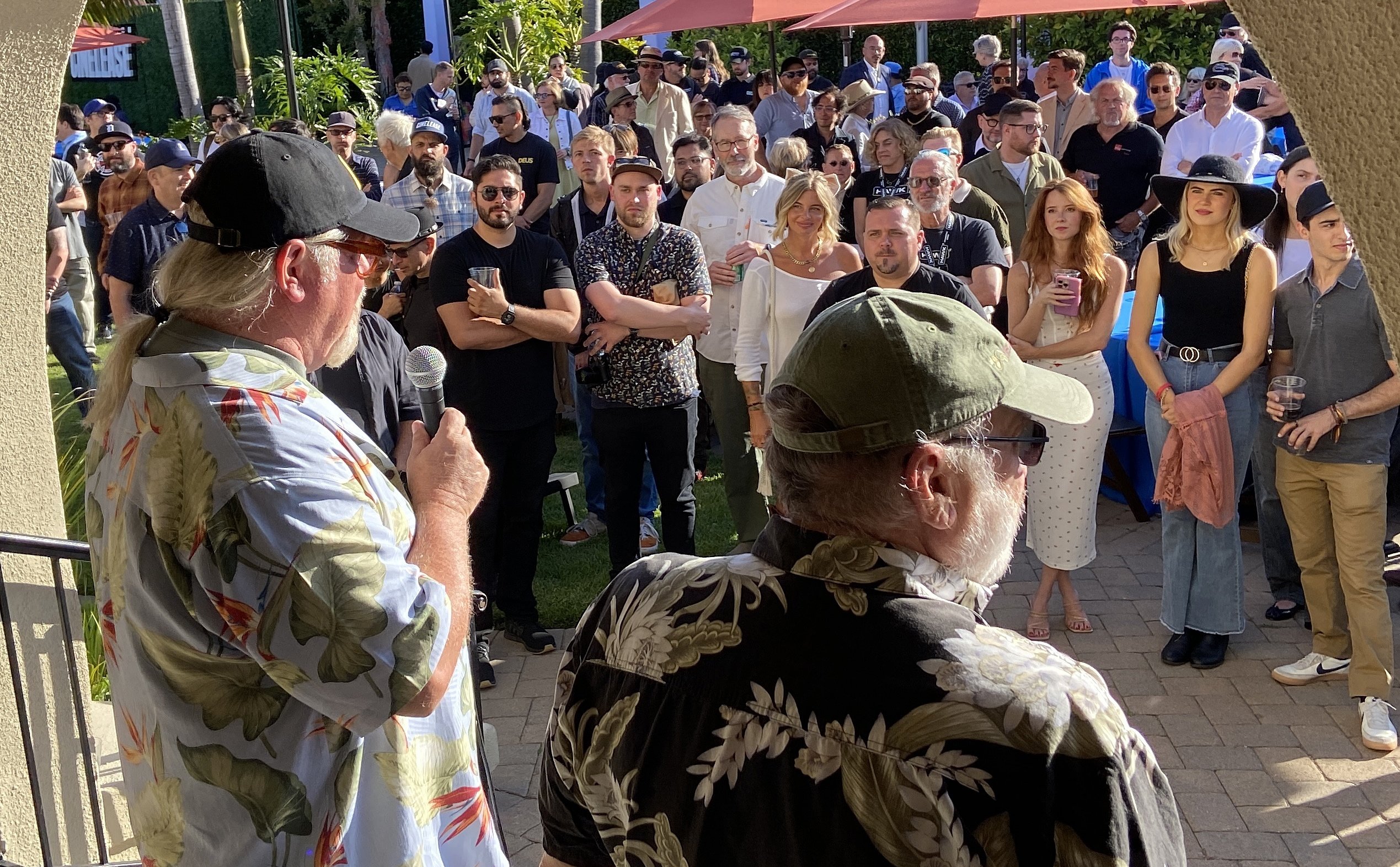
Dedication at ASC Honors Society Founding Member Arthur Edeson
Thanks to generous donations by the H. Thomas Jones Family, and Edeson’s niece, Kari C. Wruck, a unique piece of history now has a permanent home.
Remembering and documenting its heritage is a cornerstone of the American Society of Cinematographers, and on June 8, 2024, an unusual artifact of the past was rededicated after being installed in the courtyard outside the ASC Clubhouse.
The item was a metal flagpole that was originally installed outside the home of Arthur Edeson, ASC — located in Malibou Lake, just a few miles from the Society’s own home in Hollywood.
The announcement was made during the annual ASC Summer Splash BBQ event by President Shelly Johnson and First Vice President Charlie Lieberman.
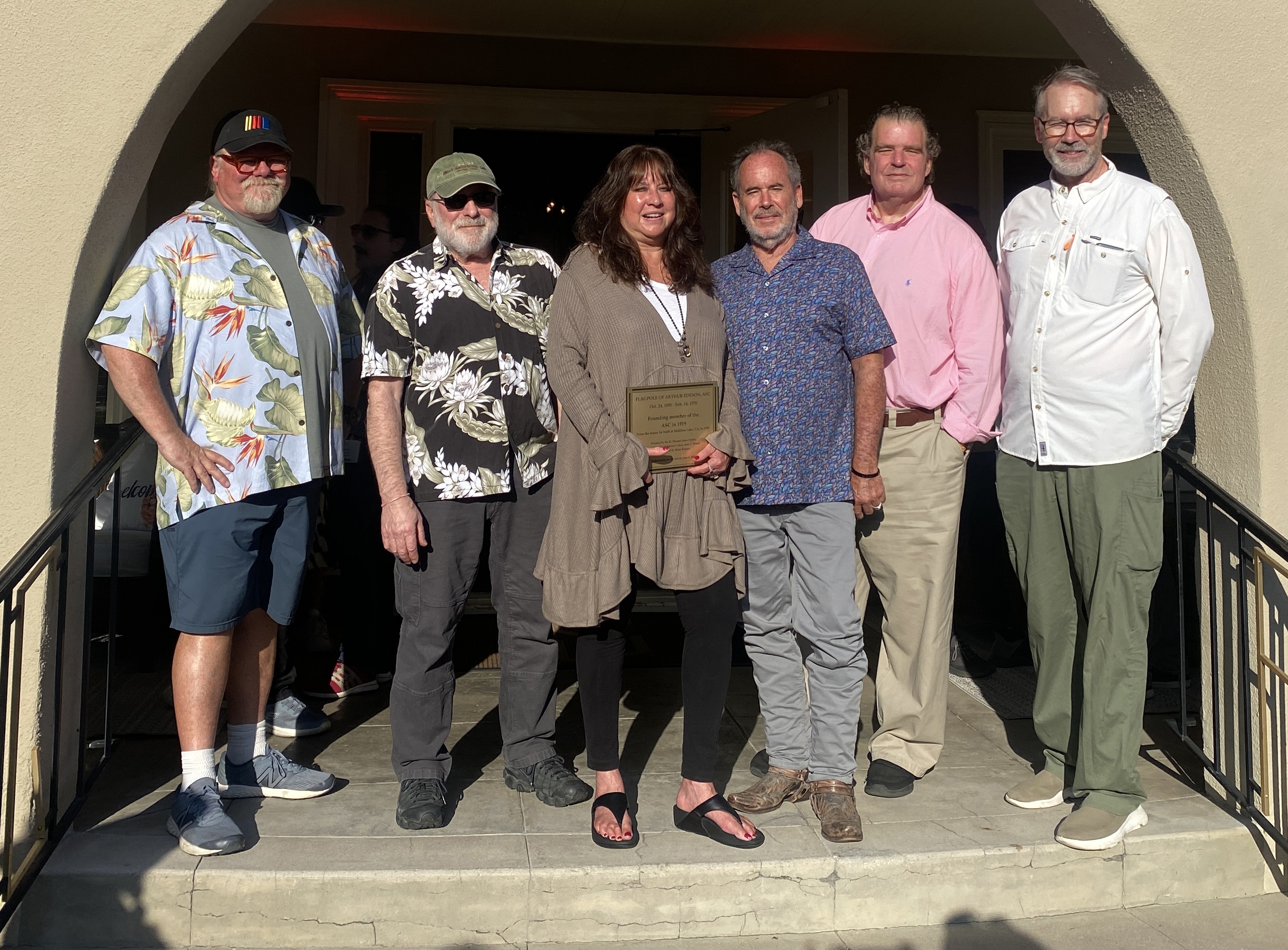
Here is a presentation version of the brass plaque that will be installed on the base of the flagpole:
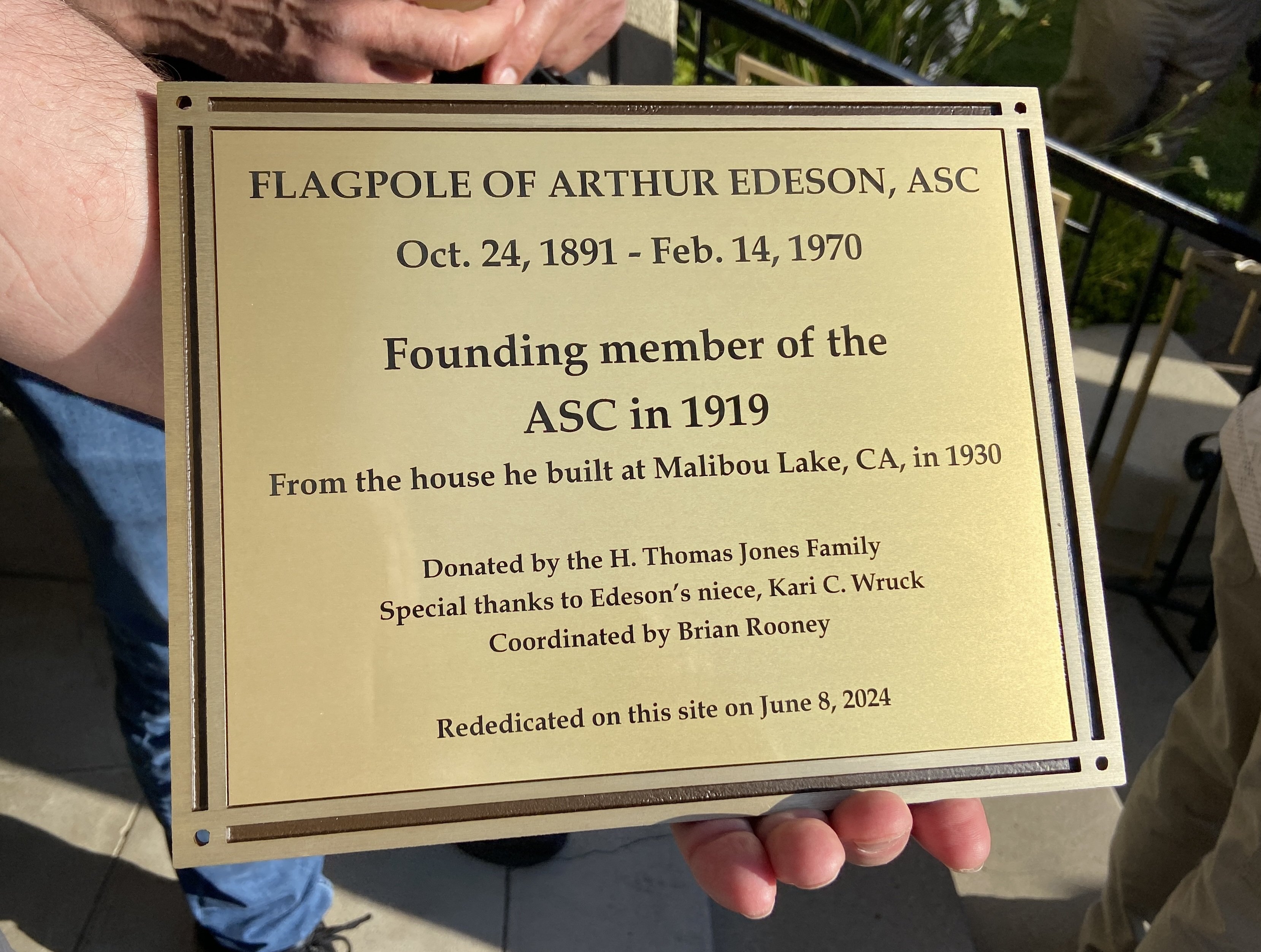
A custom ASC flag was created to fly on the vintage pole:
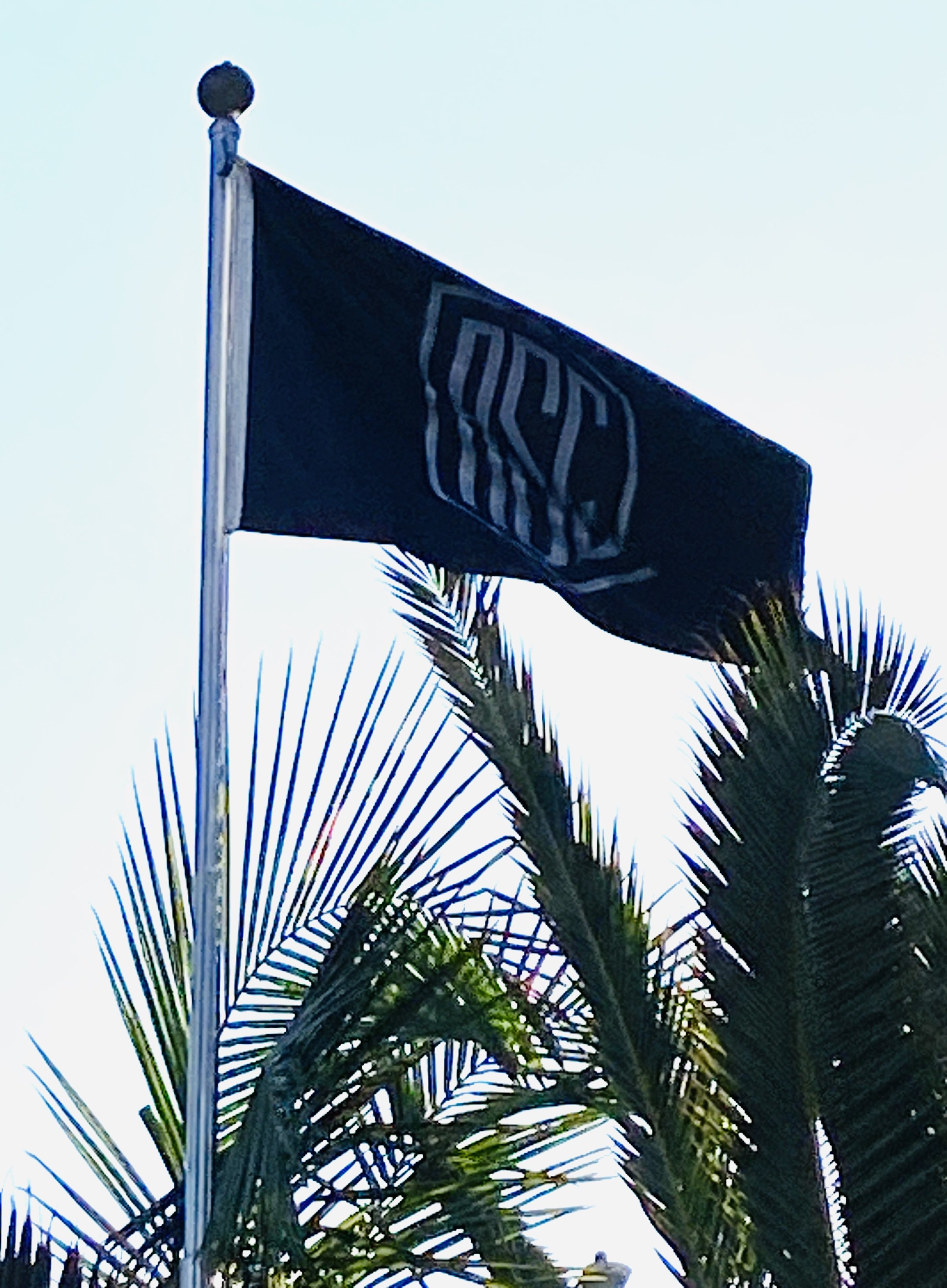
On the other side of the courtyard, the U.S. Stars and Stripes flag is presented on its own pole.
Arthur Edeson’s credits include some of the best remembered films of all time: The Maltese Falcon (1941), Casablanca (1943), Frankenstein (1931), The Invisible Man (1933) and Mutiny on the Bounty (1935).
Born in New York City on October 24, 1891, he was barely making a living as a portrait photographer in 1910 when he decided to try his hand at the movies. “I went to the old Eclair Studio in Fort Lee, New Jersey, and applied for a job. While I was waiting in the outer office, a man came in and stabbed his finger around the crowded room, saying: ‘I’ll take you — and you, and you. Come with me.’ I couldn’t tell whether or not I was one of those selected, but I joined the group anyway. Once inside the mysterious recesses of the studio, I found I’d been hired — as an actor.”
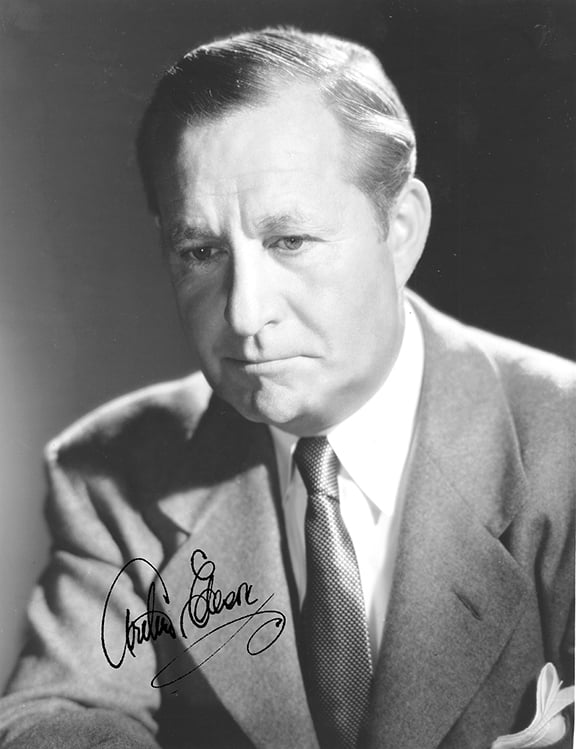
Edeson never lost his interest in photography and began to shoot portraits of his fellow actors. His photos caught the attention of cinematographer John Van den Broeck, and when a camera operator was taken ill, Van den Broeck suggested that Edeson fill in. It was his big break.
“In those times, flat lighting was the rule of the day,” Edeson later wrote. “However, I began to introduce some of the lighting ideas I had learned in my portrait work — a suggestion of modeling here, an artistically placed shadow there — and soon my efforts tended to show a softer, portrait-like quality on the motion-picture screen. This was so completely out of line with what was considered ‘good cinematography’ in those days that I had to use my best salesmanship to convince everyone it was good camerawork.”
When American Eclair was reorganized as the World Film Corporation, Edeson stayed on to become chief cinematographer for the star Clara Kimball Young, and when she left for California in 1917, Edeson followed.
In 1920, Douglas Fairbanks saw For the Soul of Rafael, one of Edeson’s films for Young, and signed the cinematographer for three of his biggest pictures: The Three Musketeers (1921), Douglas Fairbanks in Robin Hood (1922) and The Thief of Bagdad (1924).
Of Fairbanks, Edeson would say, “To anyone who worked with him, moviemaking today seems prosaic and cramped by comparison.”

Among Edeson’s credits in the 1920s were Stella Dallas, The Lost World (both 1925), and the atmospheric old-dark-house thriller The Bat (1926). At Fox, Edeson shot the first all-outdoor, 100-percent talkie, In Old Arizona (1929), and the first Fox Grandeur 70mm film, The Big Trail (1930). He later worked at Universal and MGM, and eventually settled in at Warner Bros., where he would remain until his 1949 retirement.
He died on February 14, 1970, in Agoura Hills, California.
You can learn much more about the founding members of the ASC here.






